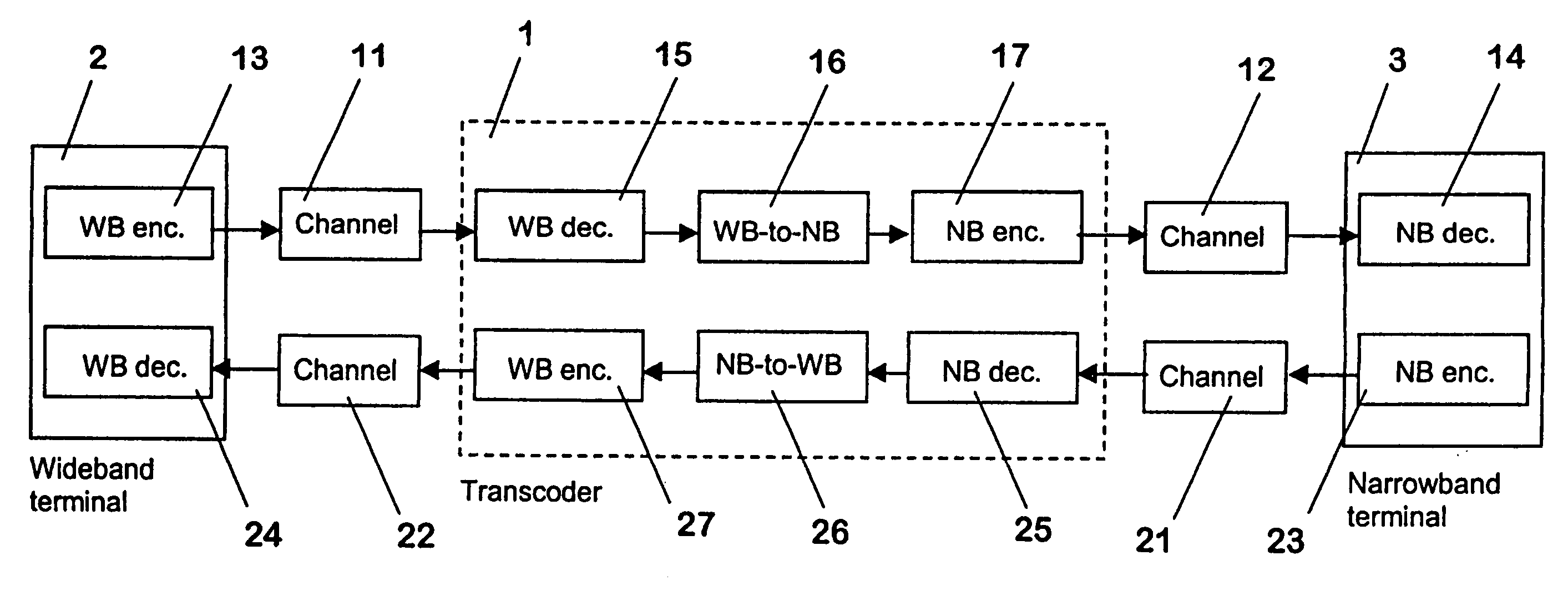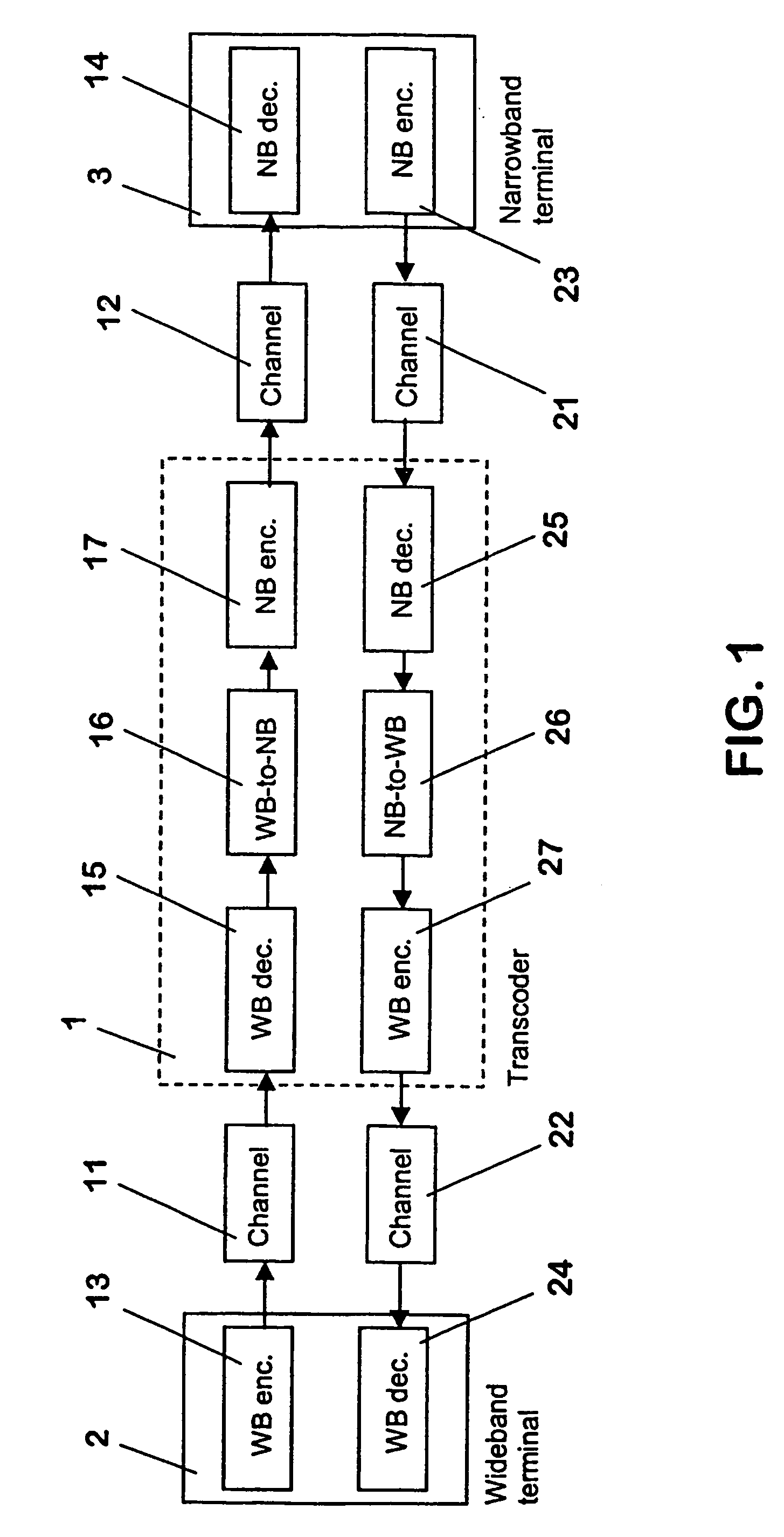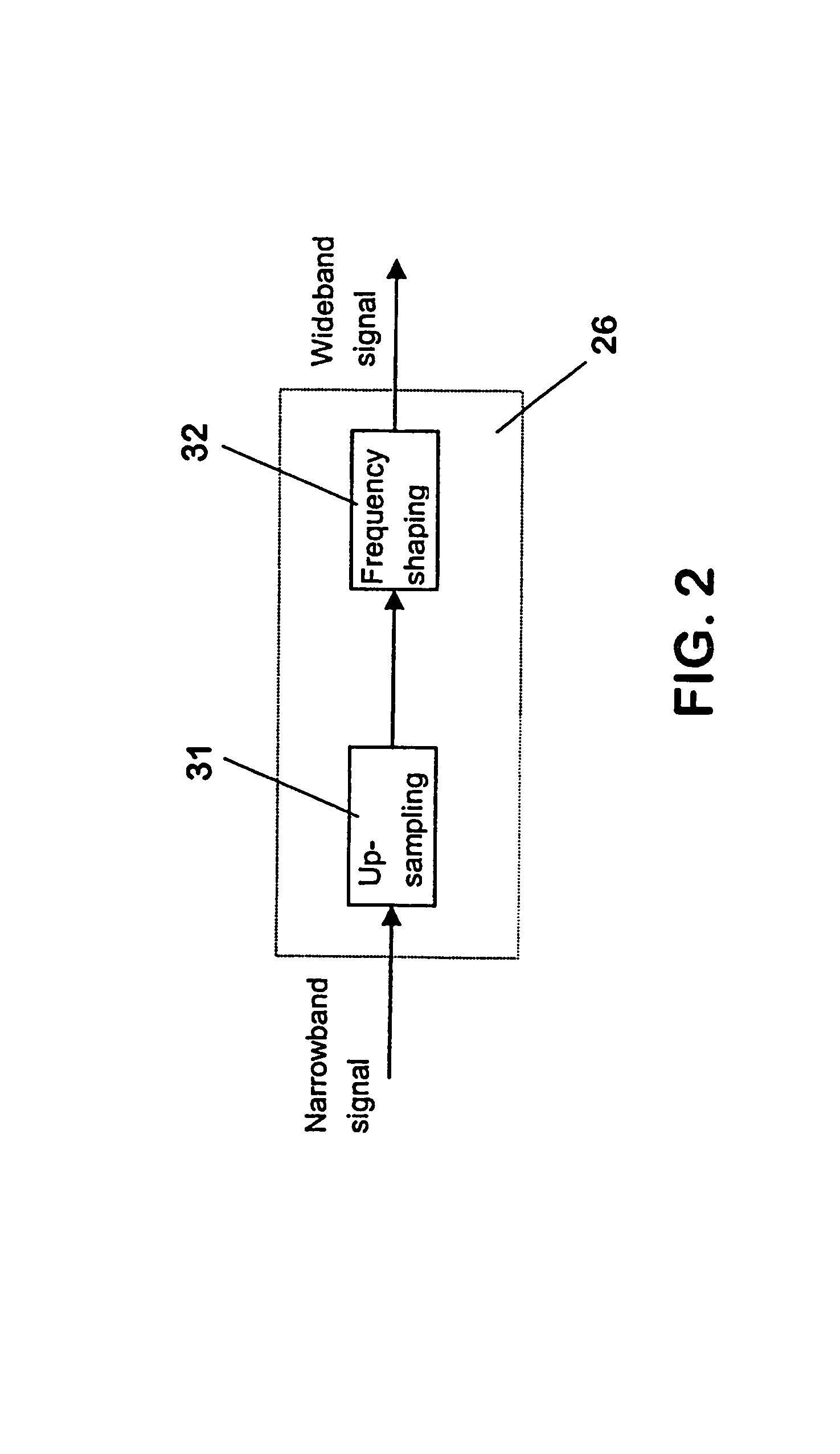Method for transcoding audio signals, transcoder, network element, wireless communications network and communications system
a technology of transcoding and audio signals, applied in the direction of digital transmission, speech analysis, interconnection arrangements, etc., can solve the problems of reducing the naturalness and intelligibility of speech, reducing the utilization of wideband speech, and pcm speech reduction, so as to achieve the effect of avoiding extra signaling for transcoding during call setup or forwarding, high quality audio, and easy provision of processing capacity
- Summary
- Abstract
- Description
- Claims
- Application Information
AI Technical Summary
Benefits of technology
Problems solved by technology
Method used
Image
Examples
first embodiment
[0050]FIG. 2 is a schematic block diagram of the narrowband-to-wideband converter 26 of FIG. 1. The converter 26 of this embodiment comprises means for up-sampling 31 and means for frequency shaping 32.
[0051]In the first embodiment, the linear narrowband signal is up-sampled without low-pass filtering by the means for up-sampling 31. This generates alias frequency components of the narrowband signal onto the upper band of the wideband signal, i.e. a mirror image of the narrowband signal in the frequency domain. This aliased wideband signal, however, contains excessive distortion which would be subjectively annoying for the user of the receiving wideband terminal 2. Therefore the distortions are smoothed in the means for frequency shaping 32 by attenuating dynamically aliased components based on the narrowband signals. It is to be noted that in particular more attenuation is needed for aliased components with voiced phonemes than for those with unvoiced phonemes.
second embodiment
[0052]Another possibility of converting linear narrowband signals to linear wideband signals is presented in FIG. 3, which illustrates, in form of a schematic block diagram, the narrowband-to-wideband converter 26 of FIG. 1.
[0053]The second embodiment of the narrowband-to-wideband converter 26 comprises a first processing branch with means 33, 34 for up-sampling and lowpass filtering received signals. A second processing branch includes means for a narrowband analysis 35 and means for an upper band signal generation 36. The output of both processing branches is connected to summing means 37, which form the output of the narrowband-to-wideband converter 26 of FIG. 1.
[0054]In the first processing branch of the converter 26, the linear narrowband signal is first up-sampled and then low-pass filtered by the corresponding means 33, 34 in order to obtain a distortion free linear wideband signal of a lower frequency band.
[0055]In the second processing branch of the converter 26, the upper ...
PUM
 Login to View More
Login to View More Abstract
Description
Claims
Application Information
 Login to View More
Login to View More - R&D
- Intellectual Property
- Life Sciences
- Materials
- Tech Scout
- Unparalleled Data Quality
- Higher Quality Content
- 60% Fewer Hallucinations
Browse by: Latest US Patents, China's latest patents, Technical Efficacy Thesaurus, Application Domain, Technology Topic, Popular Technical Reports.
© 2025 PatSnap. All rights reserved.Legal|Privacy policy|Modern Slavery Act Transparency Statement|Sitemap|About US| Contact US: help@patsnap.com



